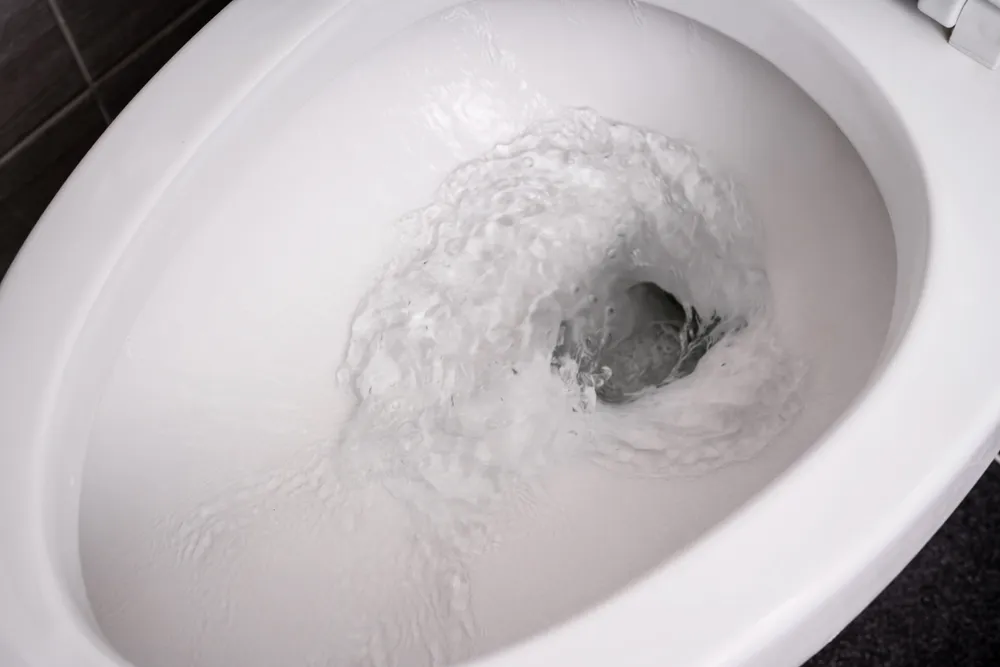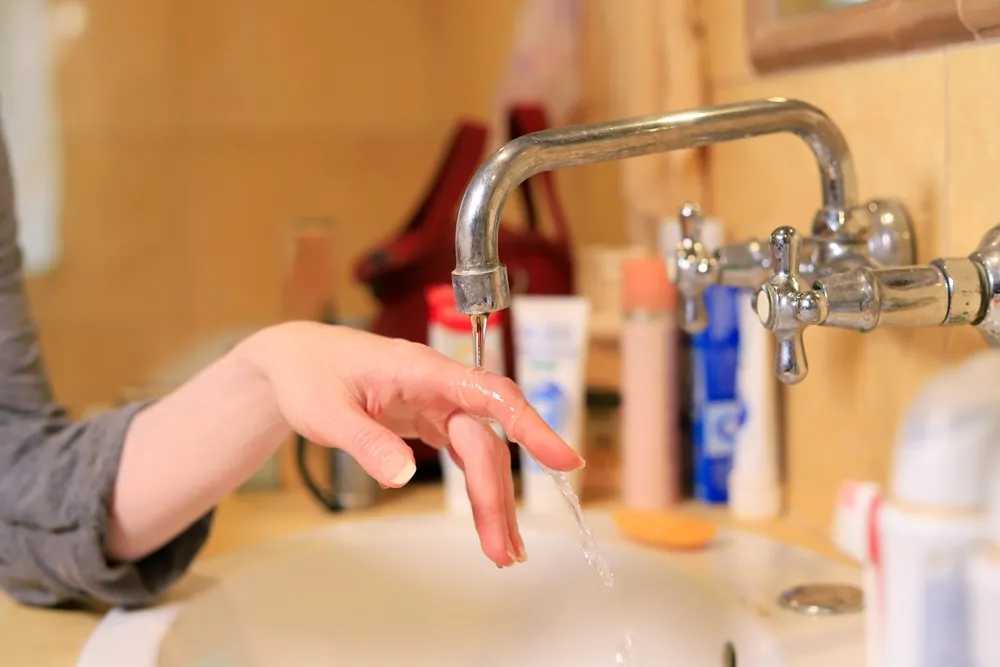Opened your latest water bill and nearly spilled your cuppa? You’re not the only one. Homeowners are often caught off guard by sudden spikes in water usage, and the culprit is usually hidden right under your nose (or floorboards). Experts at Hop To It Plumbing know how frustrating it is to face rising household costs with no clear cause. More often than not, points to silent plumbing problems draining water and your wallet.
In this guide, we’ll walk you through the most common issues behind high water bills, how to spot them yourself, and when it’s time to call in the pros. Let’s uncover what’s really going on behind the scenes and help you stop the leak before it drains your wallet. Let's get started!

The Most Common Hidden Plumbing Problems Behind High Bills
You might not see them, but hidden plumbing problems can silently drive your water bill through the roof. Each issue might seem minor, but over time, they can waste thousands of litres of water. They often escape notice until the bill lands and the damage is already done. Let’s take a closer look at the sneaky culprits that could be pushing your water usage sky-high.
Leaking Pipes
Hidden leaks, whether inside walls or beneath your lawn, can quietly waste thousands of litres before they’re discovered. Leaking indoor pipes often result from corrosion or shifting foundations, while underground issues may stem from root intrusion or soil erosion. Both require expert tools like acoustic detectors or pressure tests for accurate detection. Addressing them early prevents long-term damage and spiralling bills.
Running Toilets
A running toilet is a major source of water wastage that can be easily overlooked. The problem typically arises from a faulty flapper valve or a misaligned float, causing the toilet to run continuously. While the sound of a running toilet might be faint, the water loss accumulates rapidly, leading to unexpectedly high bills.
Fortunately, this issue is relatively easy to fix. In many cases, replacing the flapper valve or adjusting the float mechanism can resolve the issue. Conducting regular inspections of toilet components can prevent this problem from occurring in the first place.
Hidden Faucet Leaks
While a dripping faucet might seem trivial, it can waste a substantial amount of water over time. Faucets often develop leaks due to worn-out washers, seals, or gaskets. These leaks can be problematic when they occur in less frequented areas of the home or business, such as basements or storage rooms.
Routine maintenance and inspection of faucets can help prevent leaks. Replacing worn-out components is a straightforward task that can reduce water wastage and lower your bills.
Underground Leaks
Underground leaks are challenging as they are hidden from view and can persist unnoticed for extended periods. These leaks can occur in the main water line leading to your property or within the irrigation system. Factors such as tree root intrusion, soil erosion, or ageing pipes can contribute to underground leaks.
Detecting this issue often requires professional assistance. Plumbers use specialised equipment, like electronic locators or pressure testing, to identify the precise location of the leak. Once detected, repairing or replacing the affected section of piping is crucial to preventing further water loss.
Water Heater Issues
A malfunctioning water heater can also lead to unexpectedly high bills. Sediment build-up, thermostat issues, or leaks in the tank can cause the heater to work harder than necessary, consuming more energy and water.
Regular maintenance of your water heater, including flushing the tank to remove sediment and checking for leaks, can improve its efficiency and extend its lifespan. If your water heater is older, consider upgrading to a more energy-efficient model to save on water and energy costs.
Inefficient Appliances
Outdated or inefficient appliances, such as dishwashers and washing machines, can also contribute to high water bills. Older models typically use more water than their modern, energy-efficient counterparts.
Upgrading to water-saving appliances can reduce your water usage. Look for appliances with high energy and water efficiency ratings, and consider installing water-saving fixtures, like low-flow showerheads and faucets, to further decrease consumption.

How to Check for a Leak at Home (Before You Call a Plumber)
If you've noticed an unexpected increase in your water bill, you must determine whether a hidden plumbing issue might be the cause. Before you call in the professionals, there are several steps you can take to check for leaks at home. By following this guide, you can identify potential problems early and save time and money.
Monitor Your Water Metre
Your water metre is an invaluable tool for detecting leaks. Here's how to use it effectively:
- Locate Your Water Metre: Typically found near the boundary of your property, often in a box in the ground. It might be on the front curb or near your main water shut-off valve.
- Record the Initial Reading: Take note of the numbers displayed on the meter. These numbers indicate the volume of water used, usually in kilolitres or litres.
- Conduct a Two-Hour Test: Ensure no water is being used in your home. Remember to turn off all taps, appliances, and avoid flushing toilets during the test. After two hours, check the metre reading again. If the numbers have changed, you likely have a leak.
Inspect Your Toilets
Toilets are one of the most common sources of leaks in the home. Follow these steps to check for potential issues:
- Visual Inspection: Remove the tank lid and observe the water level. It should be about an inch below the overflow tube. If water is continuously flowing into the bowl, there may be a problem with the flapper or float.
- Dye Test: Add a few drops of food colouring or a dye tablet to the tank. Wait 10-15 minutes without flushing. If the colour appears in the bowl, there's a leak in the flapper valve, allowing water to seep from the tank to the bowl.
Check Faucets and Showerheads
Dripping taps and showerheads can contribute to high water bills. Here's how to assess them:
- Visual and Auditory Inspection: Look for visible drips or listen for a dripping sound when taps are turned off.
- Feel for Moisture: Run your fingers around the base of faucets and under sinks to check for moisture or pooling water, which could indicate a slow leak.
- Examine Showerheads: Unscrew the showerhead and inspect the washer or O-ring. Replacing worn parts can often solve the leakage.
Examine Your Hot Water System
Leaks in your hot water system can go unnoticed but have significant impacts. Follow these instructions:
- Inspect the Pressure Relief Valve: This valve is designed to release water when pressure builds up. Occasionally, it can malfunction and leak continuously. Listen for running water or inspect the drain line for moisture.
- Check for Pooling Water: Look around the base of the water heater for signs of leakage or rust, which may indicate a more serious problem requiring professional attention.
Investigate Outdoor Plumbing
Outdoor leaks can be just as impactful as indoor ones. Conduct these checks:
- Garden Hoses and Taps: Ensure that all outdoor taps are tightly closed and check hoses for any leaks or drips.
- Irrigation Systems: Observe your irrigation system in action. Look for areas of excessive water pooling or unusually green patches of grass, which could indicate a leak.
- Examine External Walls and Ground: Walk around your home and look for wet patches on the walls or ground, which may suggest underground pipe leaks.

When to Call a Professional for Leak Detection
Identifying the source of a sudden spike in your water bill can be challenging, especially when the problem is hidden within your plumbing system. While some issues can be resolved with basic DIY skills, others require the expertise of a professional plumber. Here’s when you should consider calling in the experts for leak detection.
Persistent Increase in Water Bills
If you notice that your water bill continues to rise despite your efforts to conserve water, it may be time to call a professional. A consistent increase could indicate a hidden leak that is not easily detectable. Professionals have specialised tools and techniques to identify leaks that are not visible to the naked eye.
Unexplained Water Sounds
Hearing running water when no taps are open is a clear indicator of a leak. This could be the sound of water seeping through your pipes, and it’s important to address it promptly to prevent any further damage. A professional plumber can accurately pinpoint the source of the sound and identify the exact location of the leak.
Water Stains and Damp Spots
Water stains on walls, ceilings, or floors are often signs of a leak within your plumbing system. These stains can lead to mould growth and structural damage if not addressed quickly. A professional plumber can assess the extent of the damage and perform necessary repairs to prevent further issues.
Low Water Pressure
A sudden drop in water pressure could be a sign of a leak in your plumbing system. Leaks can cause water to divert away from its intended path, leading to reduced water pressure in your taps and showers. A professional can locate and repair the leak to restore your water pressure to its normal level.
Unexplained Increase in Moisture Levels
If you notice an increase in moisture levels in your home, such as condensation on windows or a damp smell, it could be due to a hidden leak. Excess moisture can lead to mould growth and other health hazards. A professional plumber can conduct a thorough inspection to identify and fix any leaks causing these issues.
Visible Signs of Structural Damage
Cracks in your walls, ceilings, or foundation can be a sign of a leak. Water can weaken the structural integrity of your home, leading to costly repairs if not addressed promptly. Professional plumbers can assess the situation and provide solutions to prevent further damage.
Emergency Situations
In cases where a leak leads to flooding or severe water damage, you must call a professional immediately. Emergency plumbing services are equipped to handle such situations and can provide immediate solutions to prevent further damage to your property.

How to Keep Your Water Bill Low Year-Round
Nobody likes surprises, especially when they come in the form of an unexpectedly high water bill. The good news? With a few smart habits and regular checks, you can keep your water usage in check all year long. By implementing these tips, you can ensure that your water usage is economical and sustainable.
Implement Water-Saving Habits
Simple changes in daily habits can contribute to a lower water bill. Turn off the tap while brushing your teeth, take shorter showers, and only run the dishwasher or washing machine with full loads. When cleaning driveways or sidewalks, opt for a broom instead of hosing down the area. This not only conserves water but also reduces your overall water consumption.
Optimise Your Irrigation System
Water your garden during the early morning or late evening to minimise evaporation. This ensures that your plants receive the necessary hydration without wasting water. Also, installing a rainwater tank can provide a sustainable source of water for garden irrigation and other outdoor uses. This practice reduces your dependency on the municipal water supply and lowers your water bill.
Regular Plumbing Maintenance
Annual plumbing inspections can identify potential issues before they become costly problems. Regular maintenance checks by a professional plumber will ensure that your plumbing system is functioning efficiently and free of hidden leaks.
A sudden spike in your water bill is more than just a financial headache; it’s often a sign of hidden plumbing problems quietly wasting water behind the scenes. By staying alert to common issues like dripping taps, leaking toilets, and underground pipe damage, you can catch problems early and avoid costly surprises. While some checks can be done at home, don’t hesitate to bring in the experts when needed. At Hop To It Plumbing, we’re here to help you uncover the cause, fix the issue fast, and keep your water bill under control. If your bill has jumped without warning, contact us today for a professional inspection and peace of mind.
-full-color-rgb-2000px-w-72ppi.webp)

